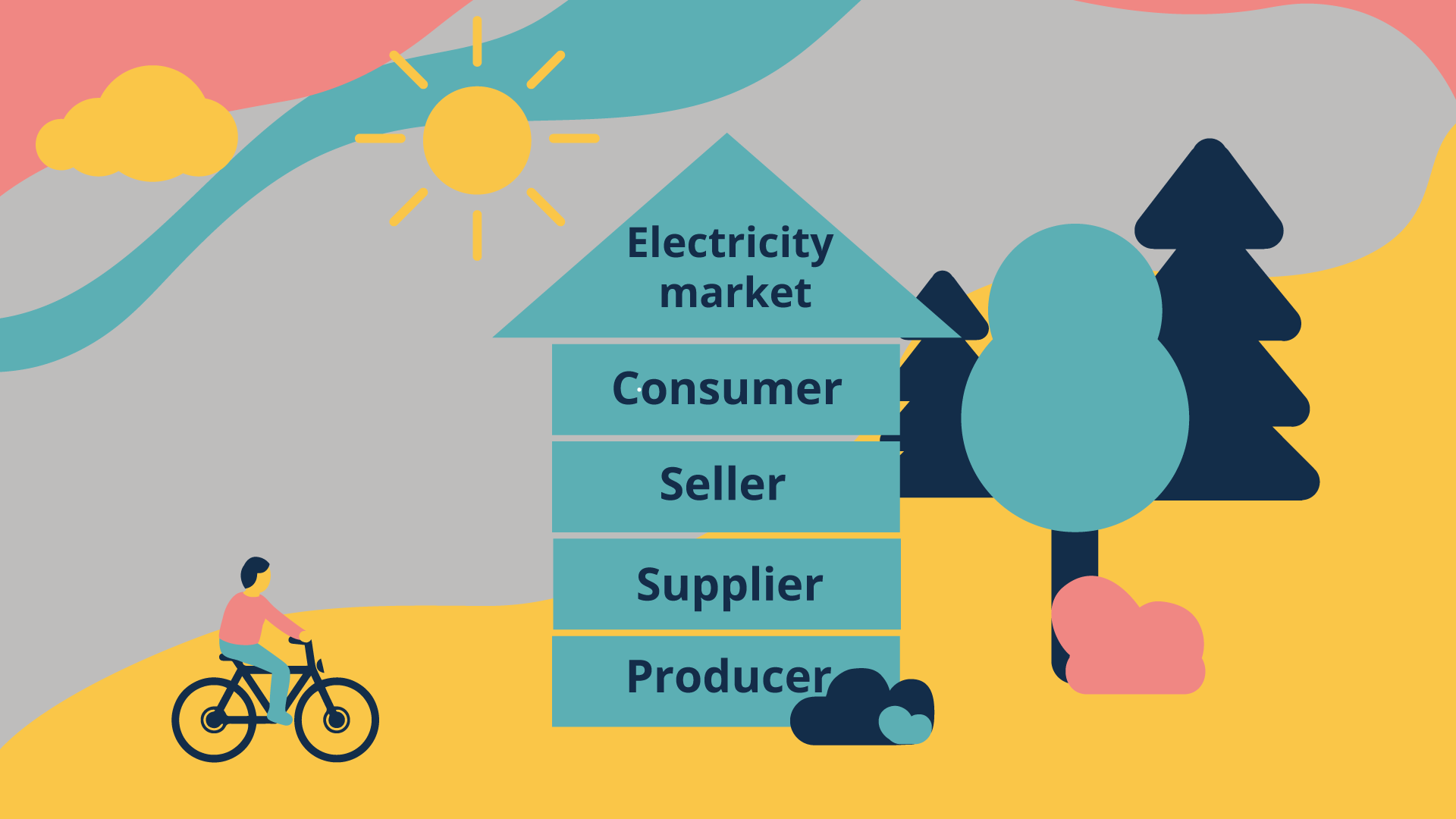How does the electricity market work?
Like any product or service, the electricity that drives our daily lives has its own background story and the way it reaches the end consumer. Naturally, the achieved end result – the quality and price of the service depends on this way, its peculiarities and the processes involved. The main principles of operation of the electricity market, as of other markets, depend on the demand, supply, service provider and process supervisory legislation.

What is the electricity market? What does it consist of?

The electricity market has four main components – producer, supplier, seller and consumer, that is, buyer. Looking closer at the overall picture, the story begins with the generation of electricity. The processes and ways to achieve this are very different, but the main idea remains the same – to use other available energy sources, such as motion, heat, light or anything else in order to convert them into electricity with additional mechanisms. Naturally, using different methods for obtaining electricity will also change the cost of obtaining it. As with any other product, the manufacturer, when selling it, will always make sure that costs are covered and it is possible to make a profit instead of a loss.
If once the price and tariff of electricity were regulated and set by the State, nowadays Europe, including Latvia, has started to move towards the opening of the electricity market. Starting in 2007, Latvia took the first steps in this direction, and the market was opened to companies with high electricity consumption. Later, in 2012, all business customers were able to participate in the free market, and from 1 January 2015, the market was also opened to households. In an open market as it is today, the price of electricity is determined by competition between electricity traders, and the retail price that customers, will eventually see in our bill at the end of each previous month will be the wholesale price plus the trader’s mark-up.
How is the price of electricity determined?
Looking at the final price for the consumer in Latvia in this system, the following overall picture can be seen – producer, supplier (transmission and distribution at a regulated price), trader and value added tax which are support payments to electricity producers who produce it, using renewable resources and cogeneration.
Electricity price on the exchange
By definition, the electricity market is a system enabling its direct purchase and sale at a mutually agreed price. Assuming that electricity is like any other commodity, it also has other characteristics of commodities, such as import and export. If the price of locally produced electricity is too high or the volume produced is insufficient, a situation may arise that it is imported, for example, from neighbouring countries, where it is produced with a surplus or its price is more favourable.
Electricity transmission and distribution

With the production and wholesale stages behind, the next important stage is the supplier stage, which consists of AS Sadales tīkls and AS Augstsprieguma tīkls. Together, these two joint stock companies, whose services compile a fixed price or tariff on the end-user’s electricity bill, provide electricity transmission and distribution, maintain and develop the electricity network in Latvia and take care of general and sustainably efficient electricity transmission.
Elenger’s role in the electricity market
At the end of the chain, the last stage, which we also face on a daily basis, is electricity traders, such as Elenger. After the electricity trader has purchased electricity on the electricity exchange in bulk, it is sold at retail at the final price to business customers and households. At this stage of the process, traders compete with each other under the free market principle with the quality and price of the offer, and it is the stage where the final consumer will benefit from competition. In order to beat the competitors, the trader is interested in creating the best possible offer at this stage in terms of price, contractual obligations, customer service, convenience or in any other way that would add value to the end buyer and make the end buyer choose the trader’s service. From the point of view of business customers, the participation of traders in process improvement, the provision of energy efficiency advice and the ability to adapt to changes in the needs of the business customers, can also play an important role.
Conclusion – both companies and households are free to choose the most appropriate electricity trader, one that meets their exact requirements and consumption. Given tariffs, contract terms and penalties, price variability depending on consumption (whether the price is fixed or adjustable) and other factors, we can enjoy the magic of the free market as traders work on ever new ways to improve both the experience and prices.